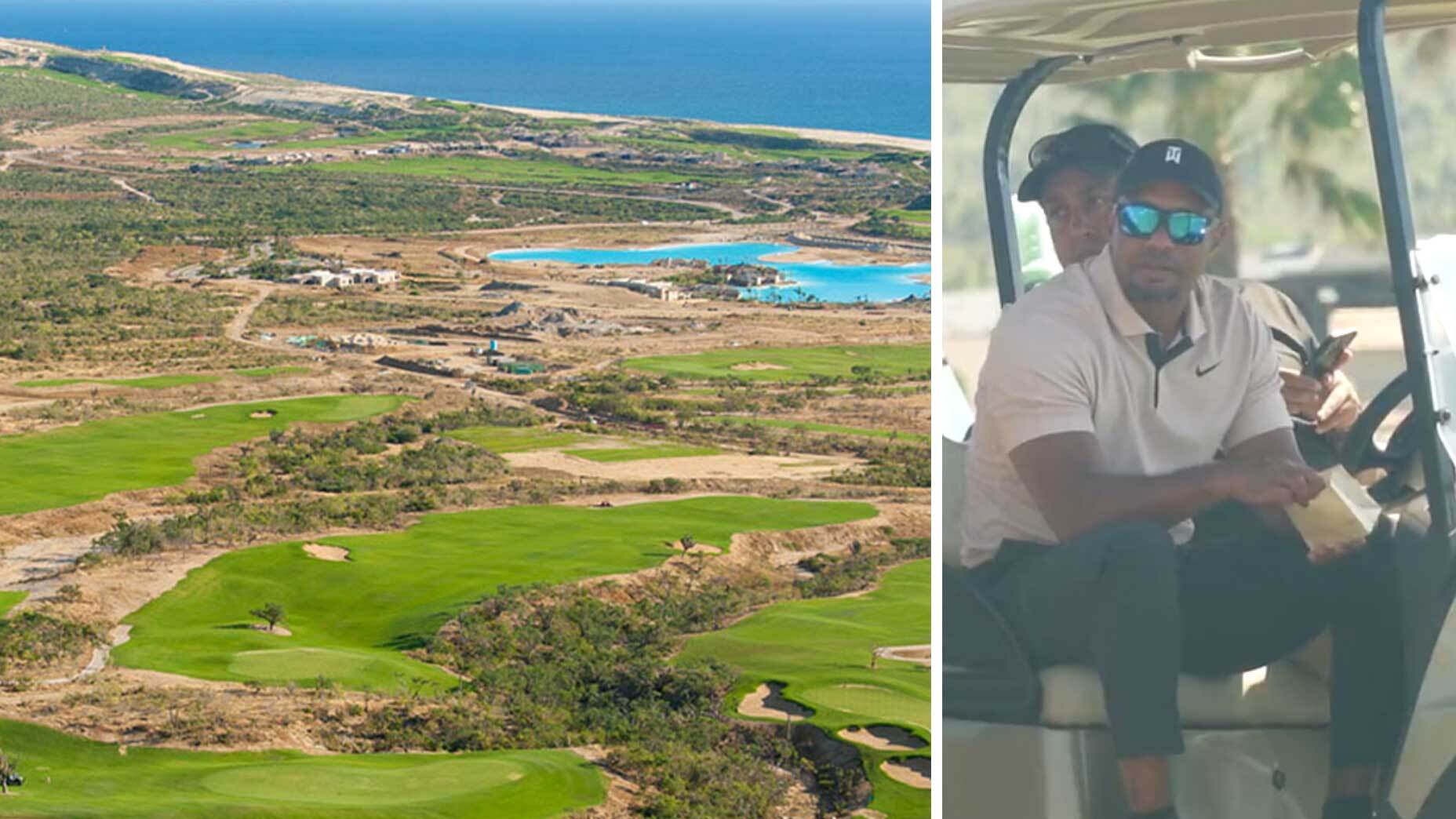Family farmers are, as a rule, famously prudent people. They have to be because they’re constantly reinvesting their own money. Every dollar spent – whether it be for more land, more workers, new equipment – has to be rationalized. Will it benefit the bottom line?
So when the Gebbers family, now well into their second century operating family-owned Gebbers Farms in Brewster, Wash., decided more than a decade ago to enter an entirely new business – golf – they did so cautiously.
They hired architect David McLay Kidd and gave him a couple of hundred sandy acres on a lovely bluff high above the Columbia River. Kidd produced a remarkably entertaining golf course, which the Gebbers family opened in 2014 and dubbed Gamble Sands. They complemented it, appropriately enough, with a small, unpretentious clubhouse. These are farmers, people proud to work their land; they don’t do ostentatious 50,000-square-foot clubhouses with valet parking and an Olympic-size swimming pool out back.
In a wonderful video tribute to the late Danny Gebbers, perhaps the most important figure in the family’s history, Gebbers is shown gesturing toward the surrounding land, saying, “It all starts here. This anchors you here. … No salesman, no advertisement, no guy on a cellphone, no tweets. Right here is what decides it all.”
He was talking about how the region’s fertile land produced the delicious apples, cherries and pears that turned Gebbers Farms into a global business. But as it turns out, that same rich land also produced a roaring golf adventure. (Danny Gebbers died a few months after Gamble Sands opened.)
From the moment it opened, Gamble Sands became one of the “it” courses, a must-play that drew golfers from across the Pacific Northwest and much further away. It currently sits at No. 18 on Golfweek’s Resort Courses list and No. 22 on the public-access list.

Florida-based Golfweek course rater Rob Jordan said Gamble Sands reminded him of Pennard in Wales, the so-called “links in the sky.”
“It’s just a very impressive setting up there high on the bluff,” said Jordan, who played it three times in 2021 at the Golfweek Rater Cup. “The course got more intriguing the more you played it. You could bounce it up and run it up, there were different options around the greens, different avenues from tee to green, a great variety of holes.
“It’s a great match-play course because of all the options it provides.”
That appreciation for the resort’s first course has been widely shared by Gamble Sands’ customers, so much so that the Gebbers family’s biggest problem has been keeping up with demand for more golf. In 2021 the resort opened the 14-hole, par-3 QuickSands, which is ranked No. 17 on Golfweek’s Short Course list.
“What an enjoyable experience that was!” said Jim Gibbons, a Golfweek rater who visited in June. QuickSands provided a soft afternoon landing for Gibbons’ 20-person group after their six-hour bus ride from Portland. “I haven’t had that much fun on a little par-3 course in a long time. It was just delightful. Everybody just had so much fun with that.”
Though the resort just shut down for winter, it remains a hive of activity. A new restaurant and event space called The Barn, which can accommodate 250 people, just opened. Next year will bring the opening of 40 double-king rooms, which will more than double the number of beds available to guests.

That’s all necessitated by the planned 2025 opening of Kidd’s second 18-hole course. Kidd said he has completed shaping the new course and has grassed five holes.
“Part of the reason we’ve been so successful is that our first golf course is so good, so people do return here more than another resort that might have one golf course,” said Blake Froling, the resort’s general manager, who noted that the fescue turf and links-style terrain differentiates the golf experience from most regional competitors.
That said, there’s plenty of consumer demand to accommodate Kidd’s second 18-hole layout on property. Groups typically have to book at least 10 months in advance, and the average stay is two nights. “We fully expect that to increase a whole night when the second course opens,” Froling said.
Kidd said the second course sits on land where he had hoped to build the first course, but at that time, the land still was being farmed and had an above-ground powerline running through it. Gamble Sands’ success convinced the family to move the farming operations and have the powerline buried underground.
Kidd gives the land an architect’s highest praise. “It’s a cool piece of dirt,” he said, with sandy terrain and more waterfront drama than the first course.
Playability is central to Kidd’s design philosophy and that won’t change on the new course, though he expects scoring to be more difficult.
“We know that confidence off the tee is a signature for Gamble, so we worked hard to maintain that,” Kidd said. “But it’s a completely different bunker style. It’s not these long, linear, open sand scrapes like you’ll find on the first course. It’s much more dotted throughout the golf course. They’re smaller and more intricate, and they’re probably more guarded than the first course.
“So I would say the second shots are harder, the greens are smaller and there’s more contour. There’s plenty of room around the greens to miss and still recover. But I expect people to say the second course is a little harder.”
In his tribute video, Danny Gebbers recalled a time when land around Brewster used to sell for 50 cents an acre. Now it’s darn near priceless thanks to the family’s booming agriculture and golf businesses. In a sense, Gebbers’ philosophy echoed that of Ben Hogan, who said “the secret is in the dirt.”
Gebbers put it this way: “It all starts right here (on the land). That’s why we do this. End of story.”









